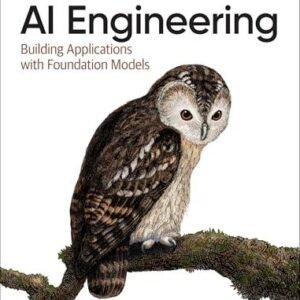In today’s fast-paced industrial landscape, the quest for operational efficiency and reliability has never been more critical. Traditional maintenance strategies often struggle to keep up with the demands of modern production environments, leading to costly downtime and asset failures. Enter Artificial Intelligence (AI), a transformative force poised to revolutionize how industries approach maintenance. Predictive maintenance solutions powered by AI enable organizations to anticipate equipment failures before they occur, drastically reducing unplanned outages and enhancing overall productivity. In this article, we explore the pivotal role of AI in reshaping industrial maintenance, uncovering the benefits, challenges, and future prospects of predictive technologies. Join us as we delve into how this groundbreaking approach not only optimizes asset management but also positions companies to thrive in an increasingly competitive marketplace.
Table of Contents
- Enhancing Equipment Reliability Through AI-Driven Predictive Maintenance
- Understanding the Data: Key Metrics for Effective Predictive Solutions
- Integrating AI Technologies with Existing Maintenance Practices
- Future Trends in AI for Industrial Maintenance: Preparing for Tomorrows Challenges
- The Conclusion
Enhancing Equipment Reliability Through AI-Driven Predictive Maintenance
In today’s fast-paced industrial landscape, ensuring the reliability of equipment is paramount for maintaining productivity and reducing costs. AI-driven predictive maintenance leverages vast amounts of data collected from machinery to forecast potential failures before they occur. By analyzing historical performance data and employing advanced algorithms, organizations can identify patterns and anomalies that indicate when a machine is likely to require maintenance. This proactive approach not only helps in minimizing unplanned downtime but also allows for a more strategic allocation of resources, optimizing maintenance schedules, and extending the lifecycle of equipment.
Implementing AI in predictive maintenance involves various essential components that contribute to enhanced reliability. Key aspects include:
- Data Collection: Continuous monitoring of equipment through IoT sensors enables real-time data gathering.
- Data Analysis: Machine learning algorithms sift through this data to predict potential failures.
- Actionable Insights: Automated alerts and reports help maintenance teams prioritize tasks effectively.
- Continuous Improvement: Ongoing learning from performance data refines predictive models over time.
To further illustrate the impact of AI on maintenance strategies, consider the following table that outlines the benefits of this approach compared to traditional maintenance practices:
| Aspect | Traditional Maintenance | AI-Driven Predictive Maintenance |
|---|---|---|
| Maintenance Schedule | Time-based | Condition-based |
| Downtime | Unplanned | Minimized |
| Resource Allocation | Reactive | Proactive |
| Equipment Lifespan | Limited | Extended |
This shift towards data-driven maintenance not only enhances the reliability of equipment but also aligns with broader initiatives in digital transformation across industries.
Understanding the Data: Key Metrics for Effective Predictive Solutions
To harness the full potential of predictive maintenance solutions powered by AI, it is crucial to focus on specific metrics that indicate the health and performance of industrial assets. These key indicators not only aid in identifying potential failures but also enhance the decision-making process for maintenance strategies. Essential metrics include:
- Mean Time Between Failures (MTBF): A measure of the average time between equipment failures, crucial for evaluating reliability.
- Mean Time to Repair (MTTR): The average duration taken to restore a system after failure, reflecting efficiency in maintenance decisions.
- Overall Equipment Effectiveness (OEE): A comprehensive metric that considers availability, performance, and quality, essential for maximizing productivity.
- Failure Rate: The frequency of failures within a given timeframe, useful for predicting future breakdowns.
In addition to these metrics, data quality and completeness significantly impact the accuracy of predictive analytics. A systematic approach to data collection and analysis, complemented by real-time monitoring, can unveil actionable insights. Consider the following categories of data:
| Data Category | Description |
|---|---|
| Operating Conditions | Environmental factors such as temperature and humidity affecting equipment performance. |
| Historical Maintenance Records | Documentation of past maintenance activities to identify patterns in failures. |
| Sensor Data | Real-time data from equipment sensors providing critical insights into operational status. |
| Wear and Tear Measurements | Data on component degradation to predict when parts may need replacement. |
Integrating AI Technologies with Existing Maintenance Practices
Integrating AI technologies into existing maintenance practices can significantly enhance operational efficiency and asset longevity. By leveraging machine learning algorithms and data analytics, organizations can transform data from traditional maintenance logs into actionable insights. This hybrid approach allows companies to transition smoothly from reactive maintenance strategies to proactive, data-driven models. Key benefits of this integration include:
- Data-Driven Decision Making: Informed decisions based on real-time data help optimize maintenance schedules.
- Cost Reduction: Predictive analytics can identify potential failures before they occur, minimizing downtime and repair costs.
- Employee Empowerment: Maintenance teams are equipped with advanced tools that enhance their productivity and effectiveness.
The successful amalgamation of AI into existing maintenance frameworks requires a strategic approach. Organizations must prioritize training for personnel to ensure they can effectively utilize AI tools and analyses. Also, fostering collaboration between IT and maintenance teams will encourage seamless technology integration. To illustrate, consider the table below which reflects a basic framework for implementing AI in maintenance:
| Implementation Phase | Key Activities | Outcomes |
|---|---|---|
| Assessment | Conducting a needs analysis | Identifying critical assets and failure modes |
| Pilot Testing | Deploying AI solutions on select equipment | Gathering initial data and feedback |
| Full Integration | Scaling AI solutions across the organization | Enhanced predictive maintenance capabilities |
Future Trends in AI for Industrial Maintenance: Preparing for Tomorrows Challenges
As industries strive to enhance operational efficiency, the integration of artificial intelligence in predictive maintenance is becoming increasingly vital. AI technologies are expected to evolve, bringing forth solutions that not only anticipate equipment failures but also optimize maintenance schedules and resource allocation. This transition aims to minimize unplanned downtimes and extend the lifespan of machinery, which is crucial in today’s fast-paced manufacturing environments. Machine learning algorithms, coupled with vast datasets collected from sensors, can unveil patterns that human analysis might overlook, paving the way for smarter, data-driven decision-making.
The future of industrial maintenance will likely see a deeper reliance on cloud computing and IoT (Internet of Things). Innovations in these areas will facilitate real-time monitoring and analysis of machine conditions across global operations. Additionally, the potential for integrating augmented reality (AR) in maintenance tasks could enhance technician training and operational efficiency. With these advancements, maintenance teams will not only be prepared to tackle today’s challenges but will also be positioned to leverage the full benefits of AI-driven analytics, fostering a proactive maintenance culture.
The Conclusion
the integration of artificial intelligence in predictive maintenance marks a transformative leap for the industrial sector. As industries evolve and the demand for efficiency escalates, AI-powered solutions stand out as robust tools that not only enhance reliability but also drive significant cost savings. By leveraging predictive analytics, organizations can foresee potential issues before they arise, minimizing downtime and optimizing resource allocation.
As we look ahead, the journey toward smarter maintenance practices is just beginning. Companies that embrace this technology will not only gain a competitive edge but also foster a culture of innovation and continuous improvement. The key lies in understanding the unique needs of your operations and strategically implementing AI solutions to meet those needs.
As we navigate this exciting landscape, it’s essential to stay informed and adaptable. Whether you’re a small manufacturer or a large-scale industrial operation, the future of maintenance is undoubtedly intertwined with artificial intelligence. Stay tuned for more insights and developments in this evolving field, and prepare to unlock the full potential of your operational capabilities. Thank you for joining us on this exploration of AI in predictive solutions!





